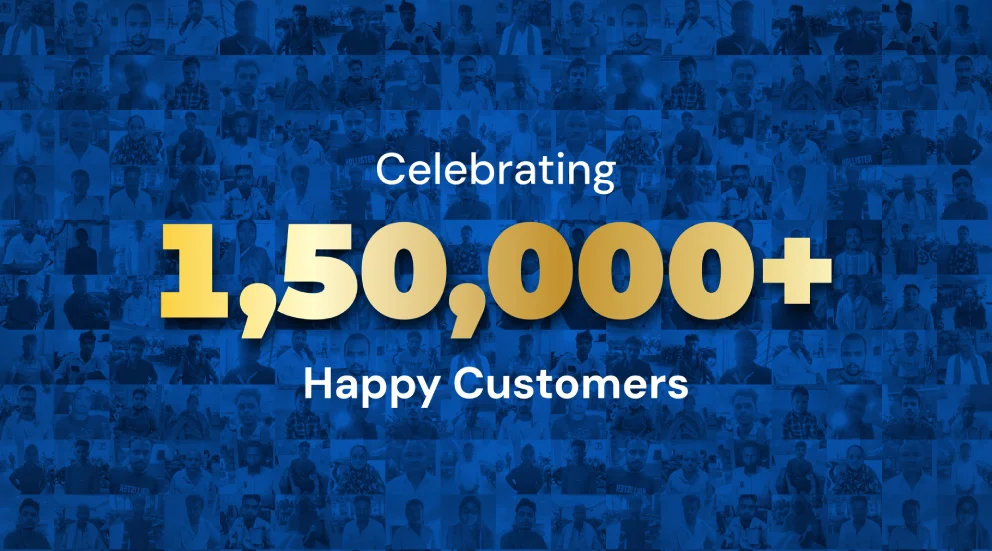
CXOToday has engaged in an exclusive interview with Mr. Aalesh Avlani Founder, Credit Wise Capital.
How will digital lending evolve in 2023, and what implications will it have on the fintech industry?
Digital lending has already been rapidly growing in India, and it is likely to continue in 2023. With the increasing adoption of digital payments, the rise of digital banking, and the availability of big data analytics, digital lending is expected to become even more efficient and accessible.
One trend that is likely to continue is the emergence of two-wheeler financing platforms. The two-wheeler finance market in India has been growing consistently in recent years due to increasing demand for two-wheelers, especially in rural and semi-urban areas. It is expected that the trend will continue in 2023, with a growing demand for two-wheeler financing options. India has a growing middle class with high disposable income and growing aspirations, which will lead to an increased demand for two-wheelers.
Another trend that could emerge in digital lending is the use of blockchain technology. Blockchain has the potential to reduce the risk of fraud and increase transparency in lending transactions. It could also allow for more secure and efficient transfer of funds between lenders and borrowers.
With the growth of digital lending, traditional banks may face increased competition from fintech companies. FinTech can leverage technology to provide faster and more personalized lending services, and they can also be nimbler and more innovative than banks. However, fintechs also face regulatory challenges and the need to build trust and credibility with customers.
Overall, digital lending is expected to continue its growth trajectory in India in 2023. While this presents opportunities for fintech companies, it also poses challenges such as the need for effective risk management and regulation.
In what ways has digital lending simplified the process of obtaining two-wheeler loans:
Digital lending has revolutionized the process of obtaining two-wheeler loans by simplifying it in several ways: Convenient and Quick Application Process: With digital lending, borrowers can apply for two-wheeler loans online from the comfort of their homes or offices. The process is simple, and the application can be completed in a matter of minutes. Paperless Process: Digital lending eliminates the need for physical documents and paperwork. Borrowers can submit all their documents online, and the entire process can be completed electronically, making it quicker and more convenient. Faster Processing: Digital lenders use advanced algorithms to process loan applications quickly. The loan approval process can be completed within minutes, and funds can be disbursed to the borrower’s account within few hours. Real-time Loan Tracking: Borrowers can track their loan application status and get real-time updates on the loan approval process through the lender’s digital platform. Competitive Interest Rates: Digital lenders offer competitive interest rates on two-wheeler loans. Borrowers can compare rates from different lenders online and choose the best option for their needs. Flexible Repayment Options: Digital lenders offer flexible repayment options, including online payment facilities, automatic debits, and pre-approved payments, making it easier for borrowers to repay their loans. Overall, digital lending has made the process of obtaining two-wheeler loans easier, faster, and more convenient for borrowers.
What methods are fintech lenders utilizing to reach customers in smaller towns of India, and can you provide some examples?
Fintech lenders are utilizing various methods to reach customers in smaller towns of India. Here are some of the popular methods: Digital Marketing: Fintech lenders are leveraging digital marketing channels such as social media, search engines, and email to reach customers in smaller towns of India. They use targeted advertising campaigns to reach potential customers in specific locations. Mobile Apps: Fintech lenders have developed mobile apps that are easy to use and can be downloaded on smartphones. These apps allow customers to apply for loans, track their applications, and make repayments from their mobile devices. Partnerships with Local Merchants: Fintech lenders are partnering with local merchants such as grocery stores, pharmacies, and gas stations to promote their services. These merchants act as agents and can help customers in smaller towns to apply for loans and complete the necessary paperwork. Micro ATMs: Fintech lenders are installing micro-ATMs in smaller towns to provide easy access to cash. These ATMs are small and portable and can be used to withdraw cash or make deposits. Customer Referral Programs: Fintech lenders are incentivizing existing customers to refer their friends and family members to their services. They offer cash rewards or discounts on interest rates to customers who successfully refer new customers. Overall, fintech lenders are using a combination of technology and local partnerships to reach customers in smaller towns of India. These efforts are helping to increase financial inclusion and provide access to credit to those who may have been excluded from traditional banking services
Examples:
Examples: Credit Wise Capital: CWC, a non-banking financial company (NBFC) in India providing two-wheeler loans through WhatsApp chatbot in 5 different language which include Hindi, Marathi, Kannada, Gujarati, English and also first in the two-wheeler industry which is using Account Aggregator (AA) to get customer banking details online & Affluence score which uses satellite images to give location score of the customers for better underwriting. Through this multilingual chatbot and using alternative data such as AA & affluence score, CWC is catering to tier 2, 3 & 4 cities in India and help customers in smaller towns who are new to credit to get two-wheeler loans. Paytm: Paytm, a popular fintech company in India, has partnered with local merchants such as milk booths, newspaper vendors, and small retail stores to promote its financial services. These merchants act as agents and help customers in smaller towns to open digital savings accounts, apply for loans, and make digital payments using Paytm’s mobile app. Lendingkart: Lendingkart, an online lending platform for small businesses, has developed a mobile app that allows customers to apply for loans and track their applications from their smartphones. The company has also partnered with local associations of small businesses in smaller towns to promote its services. Indifi: Indifi, an online lending platform for small businesses in India, has developed a referral program that incentivizes existing customers to refer their friends and family members to its services. The company offers cash rewards or discounts on interest rates to customers who successfully refer new customers. This has helped Indifi to expand its customer base in smaller towns.
What significant changes and advancements can we expect in the financial sector with the rise of fintech’s in 2023?
Some potential changes and advancements that could happen in the financial sector with the rise of fintechs in 2023: Increased Adoption of Digital Payments: With the ongoing push towards a cashless economy, fintechs are driving the adoption of digital payments in India. In 2023, we could see further growth in the number of digital payments, as well as more innovative payment solutions being introduced. Expansion of Credit Access: Fintechs are leveraging technology to offer credit to underserved segments of the population in India. In 2023, we could see more fintechs entering the lending space, as well as greater collaboration between fintechs and traditional financial institutions to expand credit access in the country. Greater Emphasis on Financial Inclusion: Fintechs are playing a key role in promoting financial inclusion in India, particularly in rural areas. In 2023, we could see more fintechs focusing on providing financial services to underserved populations, as well as more partnerships between fintechs and government initiatives to drive financial inclusion. Advancements in AI and Machine Learning: Fintechs are using AI and machine learning to offer personalized financial advice and services to customers. In 2023, we could see further advancements in these technologies, as well as greater integration of AI and machine learning in financial services across the industry.
How will the growth of specialized fintech solutions promote financial inclusion and attract more users?
The growth of specialized fintech solutions can promote financial inclusion and attract more users in India in several ways: Providing Access to Financial Services: Specialized fintech solutions can offer customized financial products and services that cater to the specific needs of underserved segments of the population in India. For example, fintechs can offer microloans to small businesses, insurance products to farmers, or digital savings accounts to low-income households. By providing access to these financial services, fintechs can promote financial inclusion and attract more users. Lowering the Cost of Financial Services: Fintechs are leveraging technology to reduce the cost of providing financial services, which can make them more affordable and accessible to a wider range of users. For example, digital lending platforms can offer loans at lower interest rates than traditional lenders, while digital payment solutions can eliminate the need for cash transactions, which can be costly and inconvenient. Offering Convenient and User-Friendly Solutions: Fintechs are developing user-friendly interfaces and mobile apps that make it easy for users to access and use financial services. This can be particularly attractive to users in India who may not have access to traditional banking services or who may be intimidated by complex financial products. Leveraging Alternative Data Sources: Fintechs are using alternative data sources, such as mobile phone usage or social media activity, to assess the creditworthiness of users who may not have a formal credit history. This can help fintechs offer credit to users who may have been excluded from traditional credit markets, promoting financial inclusion. Overall, the growth of specialized fintech solutions in India can help promote financial inclusion and attract more users by offering affordable,
Read more at: https://www.cxotoday.com/interviews/fintech-lenders-utilize-technology-and-local-partnerships-to-reach-customers-in-smaller-towns-of-india/



